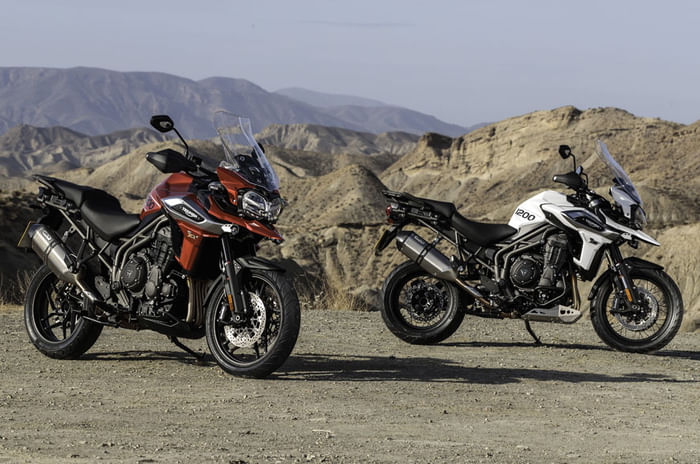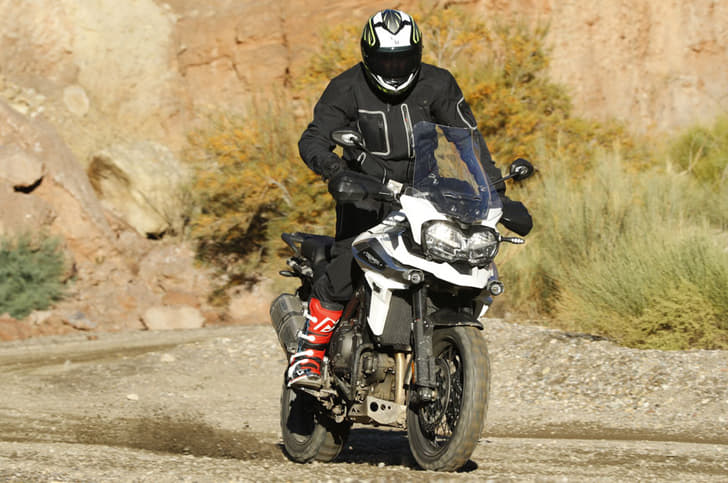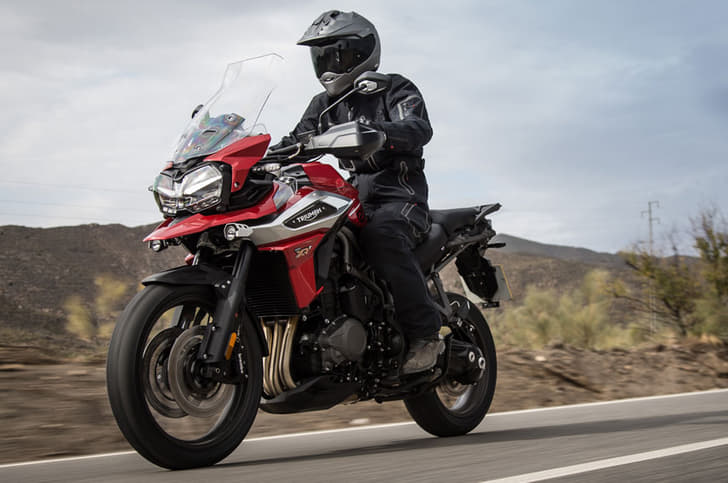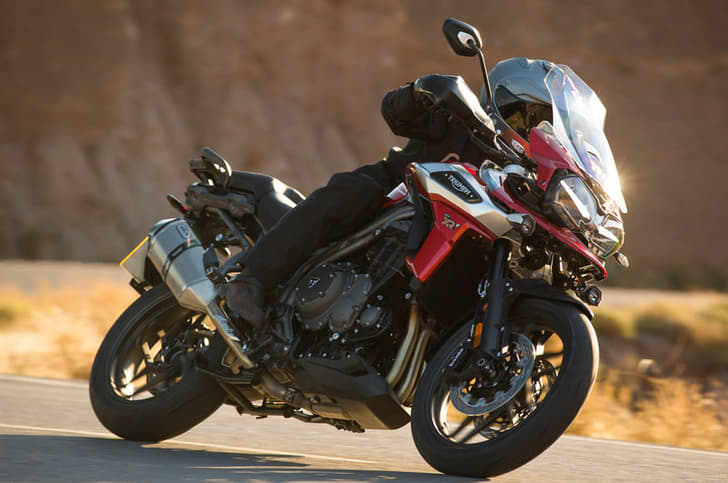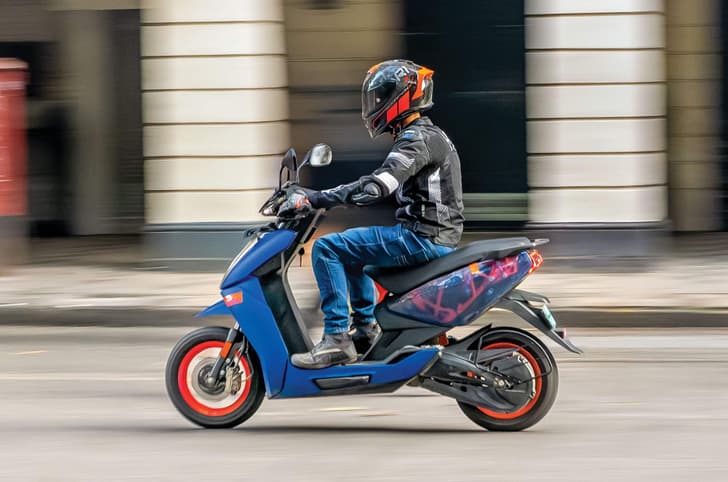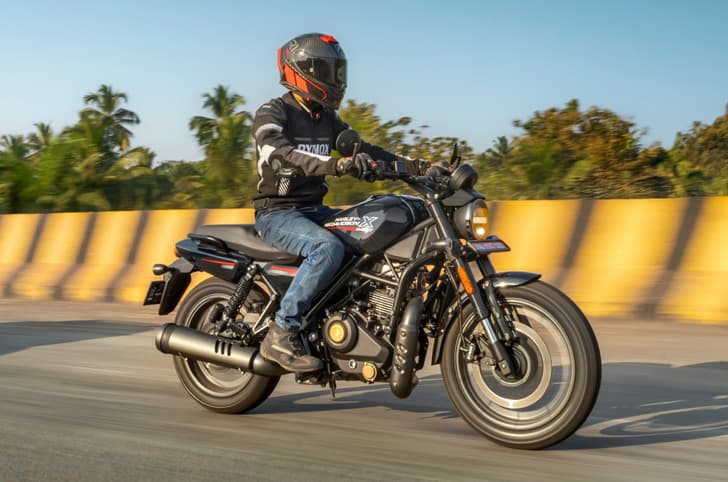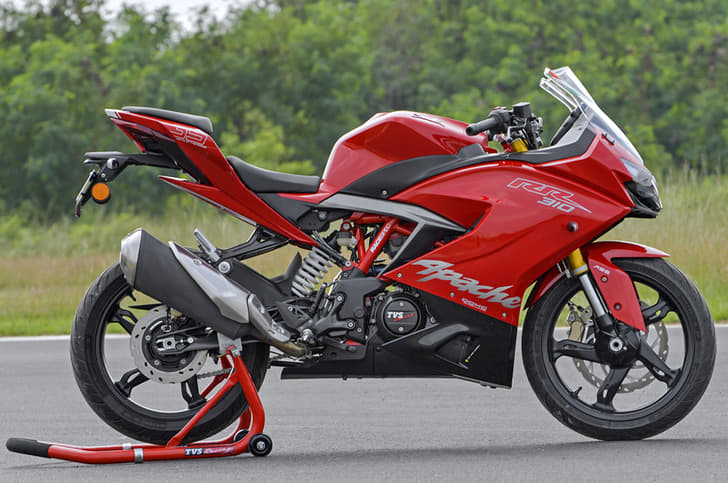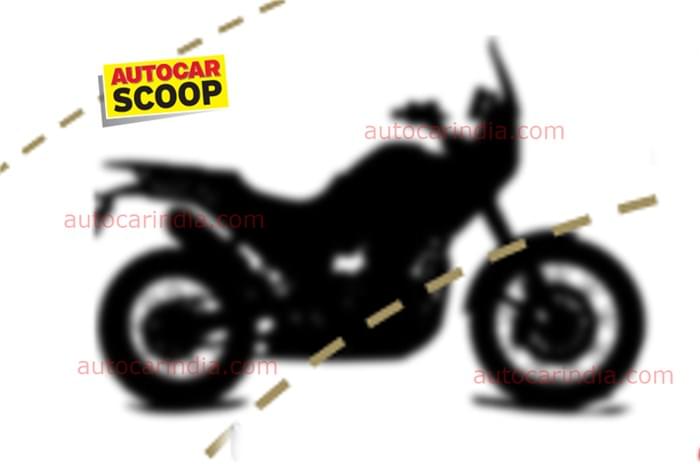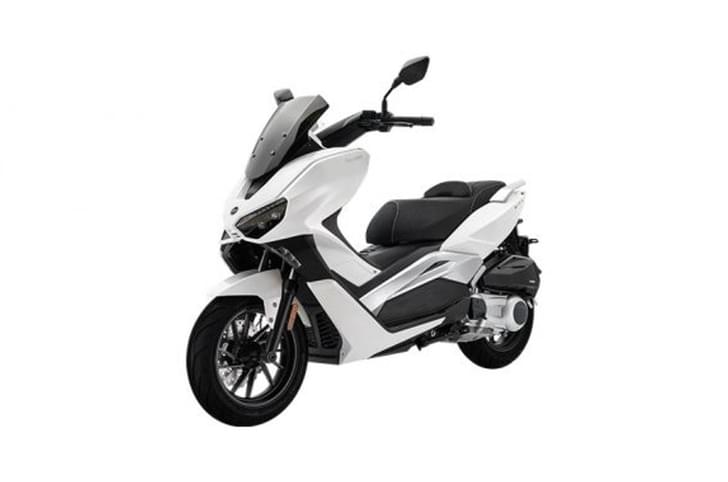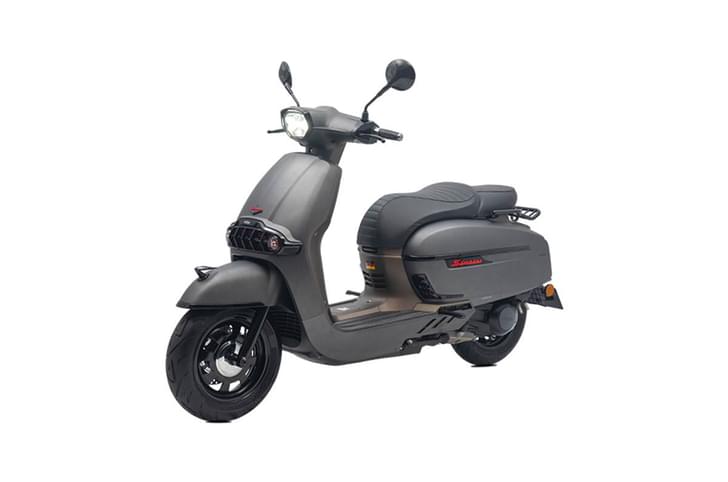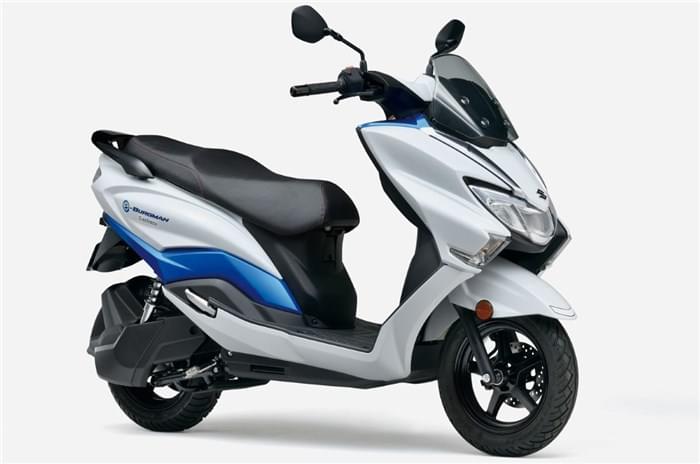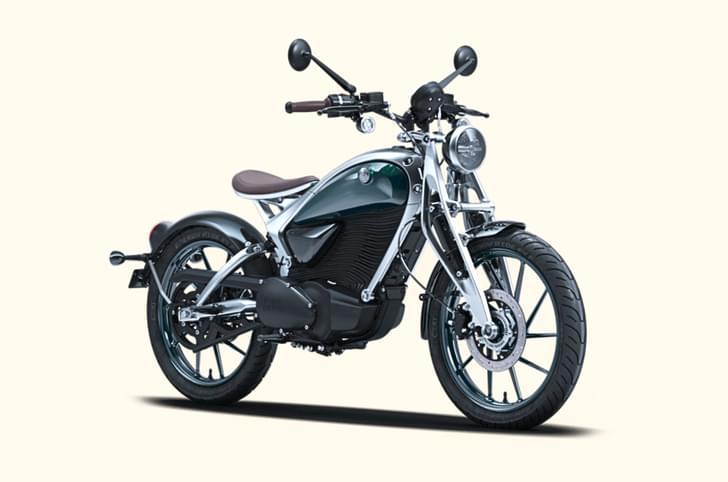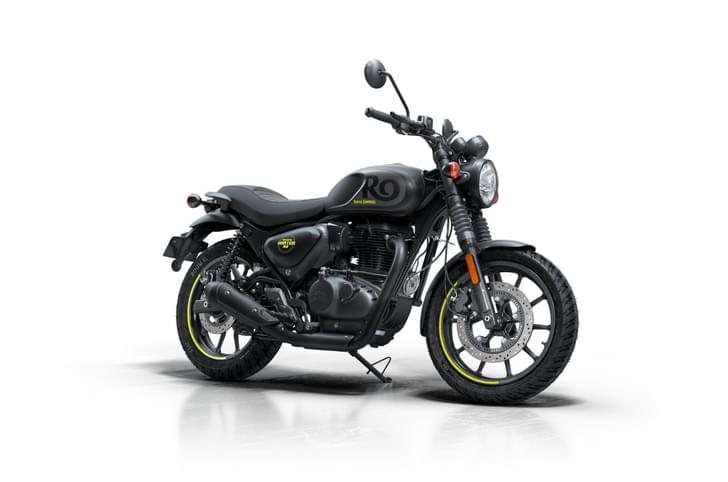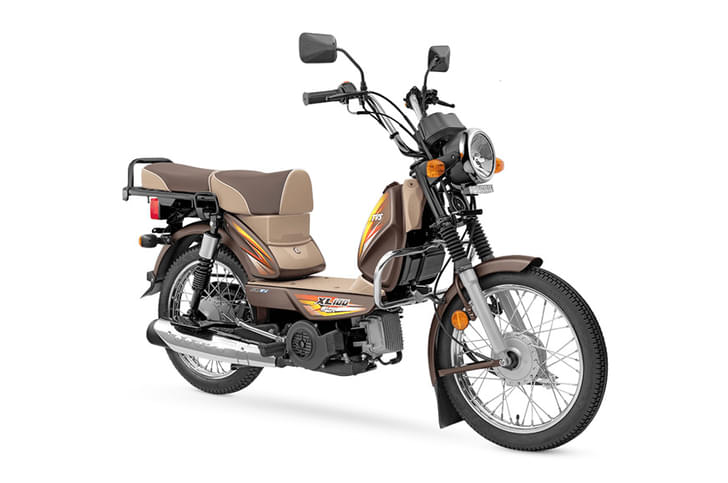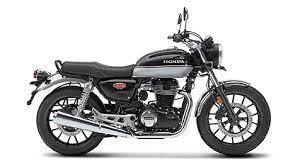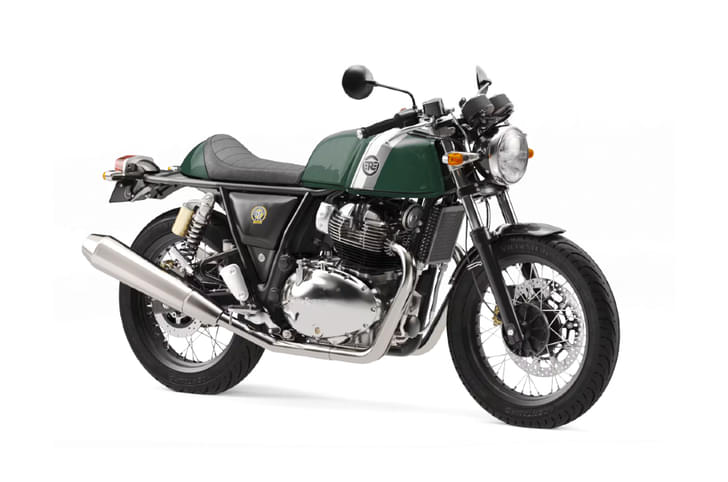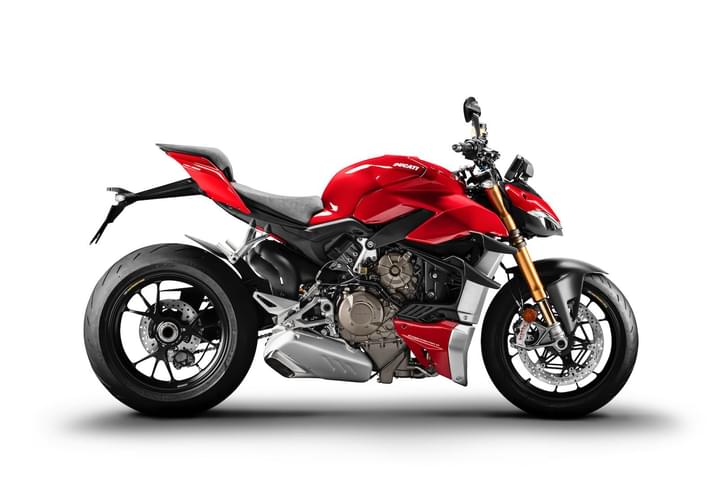The setting was oddly American for the southernmost tip of the European landmass – in Almeria, Spain, to be precise – but the 2018 Triumph Tiger 1200 barely seemed to notice. The Tiger is the type of motorcycle that makes the world seem like a small place; so this absurd, American desert landscape only heightened the Tiger’s character. Considering I am able to make observations of this sort (rather than desperately seeking to defrost thanks to the bone-chilling European winter air) should tell you a lot about how well-suited to globetrotting the new Tiger really is.
WHAT’S NEW?
The first change is to the nameplate; it’s no longer called the ‘Explorer’ and sticks to a simpler ‘Tiger 1200’ instead. With six variants in all (four XRs and two XCs), the Tiger 1200 has lost between 2-11kg over the outgoing model. The least weight reduction is seen on the base XR (242kg, dry) and the highest on the top-flight XRT (243kg). The XCX, meanwhile, is 5kg lighter and the XCA has shed 10kg, bringing their dry weights down to a common 248kg.
Enhancing its focus on rider-friendliness is the ergonomic setup, which includes a new handlebar that’s pulled back by 20mm and also a low-seat variant (XRX Low; 790-810mm). Meanwhile, all other variants have a seat height of 835-855mm. Also available across mid and top-spec variants are new adaptive cornering lights, all-LED lights, an adjustable full-colour TFT screen (as seen on the Street Triple RS), illuminated switchgear, new riding modes, Hill Hold Control and Integrated Braking System (XRT, XCA), Cornering ABS (also seen on the Explorer, now on all variants except base XR), Shift Assist (XRT, XCA; available as an accessory on mid-spec Tigers), keyless ignition and an updated cruise control unit.
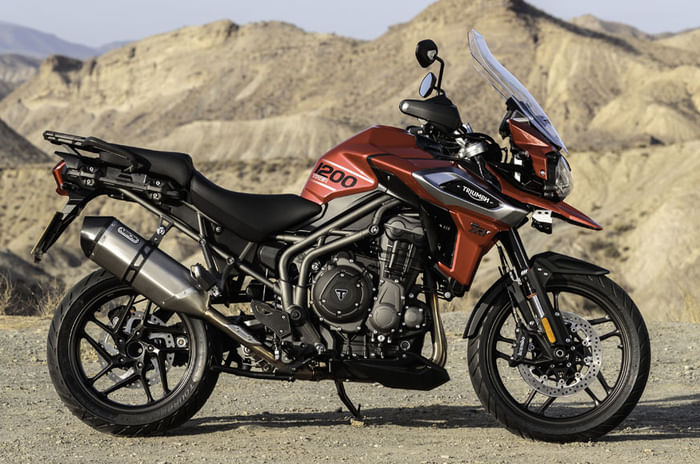
TSAS (Triumph Semi Active Suspension) is standard on all variants except the XR, and the number of riding modes on offer varies between 3 (Road, Rain, Off-road; in the XR), 4 (Road, Rain, Off-road, Sport; in the XRX and XRX Low), 5 (Road, Rain, Off-road, Sport, Rider; in the XRT; and Road, Rain, Off-road, Sport and Off-road Pro; in the XCX) and 6 (Road, Rain, Off-Road, Sport, Rider and Off-road Pro; in the XCA).
Standard on all variants is an electronic, easy-to-adjust windscreen, a 2-position seat height adjustment, USB and 12V power sockets, adjustable front and rear suspension (courtesy WP) and cruise control. Another new feature is the illuminated switchgear, which is particularly helpful at night, given that there are quite a few switches on the handlebar.
Is all this tech talk confusing? I think so too, but Triumph’s attempt at offering a bespoke riding package suited to as many individual riding preferences as possible deserves credit, nonetheless. Also, all of this will surely make more sense once you’re at the dealership, picking the Tiger you want to take home – before signing on the dotted line!
WHAT POWERS IT?
The Tiger 1200 gets the same 1,215cc, triple-cylinder motor as the Explorer – but with a few important upgrades. It features a lighter flywheel and crankshaft, a new magnesium cam cover, and also a factory-fitted Arrow exhaust (on the XRT and XCA) which is 2.1kg lighter. The silencer on the base and mid variants is also 315g lighter. Overall, the Tiger 1200’s agenda has been to get leaner, irrespective of how much so. This motor also features revised output figures – 141hp at 9,350rpm and 122Nm peak torque at 7,600rpm. While the power output has gone up by 2hp, torque has reduced by 1Nm, over the Explorer. These revisions may seem insubstantial on paper but the overall implications on the road are welcome, to say the least. We’ll get to those, soon.
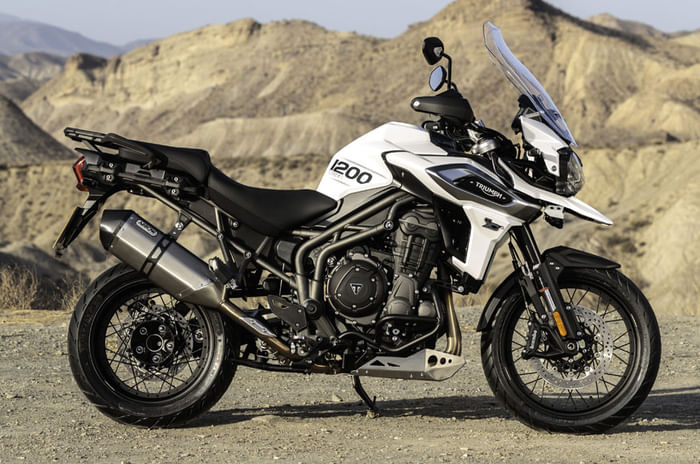
ON THE ROAD
The first Tiger I got my hands on was the XRT. Triumph had only lined up the range-topping XR for us to sample on the road (and the XCA for the off-road test on Day 2) and I, for one, didn’t mind. The weather was challenging for the Indian contingent (despite it being the warmest part of Europe, at this time of the year) and with a fast, hour-long motorway stint to tackle, ample weather protection was too kind an offer for me to be able to refuse. Within the first five minutes of settling into the XRT’s saddle, I began fiddling with the handy joystick (mounted on the LHS handlebar control pod) to adjust the windscreen. While the windscreen offers a slightly distorted view, it performs its role as a barrier from the wind blast – to a brilliant degree. The 3-stage heated grips (easy to activate, on the LHS grip) work well, too; and at no point do they get overbearing – that’s important!
What comes across as the most pleasant change, however, is how immediately nimble the XRT feels over the outgoing Tiger Explorer. The 11kg weight loss, combined with the revised ergonomics and suspension, give it an agility that belies its 243kg dry weight (No, I don’t remember these numbers by memory – I have heaps of specification sheets at hand). Breaking the ice with a motorcycle this tall and heavy is always a bit challenging; but the Tiger 1200 was genuinely easy to adapt to, even when my mind was engaged with battling the weather and riding on, well, the wrong side of the road. Now that’s evolution done right – especially in a motorcycling segment that caters to demanding riders who don’t think too highly of crossing a continent or two, every holiday season.
Out on the motorway, our six-bike convoy was consistently cruising in the range of 140kph (intermittently nudging 160kph when not in the vicinity of speed cameras). It was here that the 1200 seemed necessary – an 800 would have felt inadequate for these kind of sustained speeds – and it felt at home, munching up the miles as we enthusiastically blitzed past the stunning Southern-Spanish coastline and into the hills. The engine is punchy enough when you need it but never superbike-aggressive (unlike some of its rivals). This linearity and progression will be appreciated, especially by those with globetrotting aspirations.
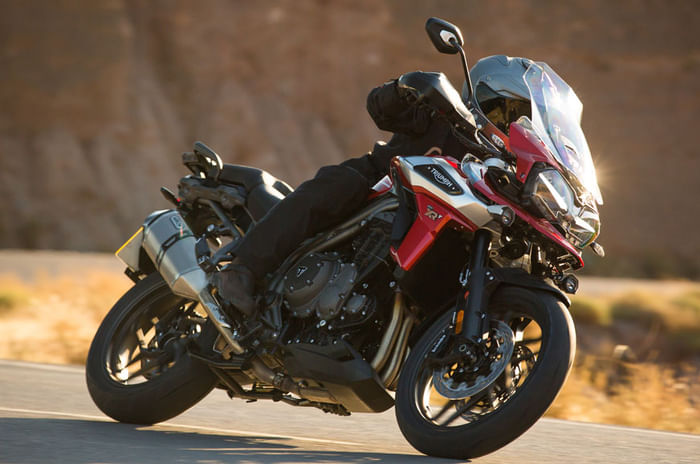
The Tiger shrinks around you as you get familiar with it; and while it always feels tall and substantial, manoeuvring it through traffic and banking it aggressively into corners isn’t a daunting task, at all. The TSAS adapts intuitively to varying riding styles and road conditions and while this is a welcome feature for road-riding, its service to the Tiger’s off-road performance are indispensable. On the road, the Tiger’s suspension is beautifully pliant, without taking away from its overall agility; and while the Multistrada (more so, the new 1260) will perhaps retain its status as the handling benchmark, the Tiger 1200 won’t, in any way, be a dissatisfying package, either. A mention has to be made of the powerful, progressive braking package – 305mm, radial-mounted twin-disc with 4-piston Brembo monobloc calipers, and a 282mm single disc with a Nissin 2-piston caliper – identical on all variants of the 1200.
OFF THE ROAD
While I have no reference point for what the outgoing Explorer was like off the road, I can say the new 1200 is shockingly good off the road for a motorcycle of its size. I have clocked decent off-road hours on the Ducati Multistrada Enduro, however; and in comparison, the 1200 XCA feels more natural, in the dirt. The 1200 really does well to hide its bulk – and it gives this away in an instant. The motor’s progression comes in handy, since what you need over low-traction surfaces isn’t all-guns-blazing power delivery but something that offers you an intuitive sense of control.
I was an early swapper to the all-new Off-road Pro mode, which turns all rider assists (including ABS at either wheel) off and, in this mode, the Tiger turns into an animal (pun well and truly intended). It’s in the dirt that the Tiger’s revisions really shine through – a 1200cc motorcycle has no right to be this good, predictable and friendly; and while it’s obviously a bit too large for you to begin your dirt-riding career with, it’s a terrific upgrade for those who have played with smaller, milder on/off-roaders, previously.
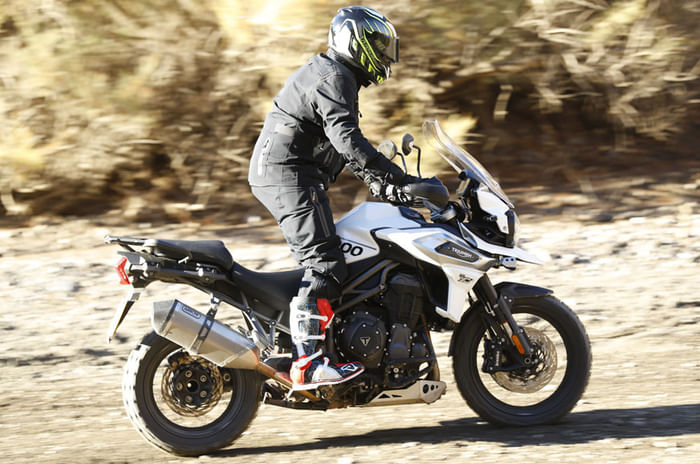
While standing up on the dirt-spec pegs was comfortable – even for extended periods –I would have preferred an even taller handlebar for the XCA. This may be a subjective preference, however, the answer to which probably lies in only the aftermarket space. I also dearly wish someone took the initiative to design some sort of hydraulic strut assembly that can lift the bike off its side once you’ve managed to drop it (I didn’t – but someone else did and it wasn’t an easy task to bring it back up). Not everyone rides in a group and with a heavy motorcycle that is expected to be ridden with all its panniers filled to the brim, an easy-lift mechanism will win Triumph brownie points from scores of overland riders.
INDIA-BOUND?
Yes, of course! A hot favourite amongst the Triumph Tiger 1200s that will come to India will be the XRX Low version. This bike – thanks to its low seat height – should definitely be popular with those interested in tarmac-travel only. While the existing Tiger XCX is priced at Rs 18.75 lakh (ex-showroom, pan-India), we expect the base XR to be priced at around Rs 16.5 lakh, making it competitive against the due-for-replacement base Ducati Multistrada – the top road-spec XRT (which rivals the Multistrada 1200 S) at Rs 20 lakh. Meanwhile, the range-topping off-road-spec XCA will be priced at over Rs 21 lakh (ex-showroom, pan-India).
Is it going to be worth the short wait? Absolutely, considering the thoughtful revisions Triumph has layered the new Tiger with – all of which make it more potent and friendlier, too. Start saving up, now!
